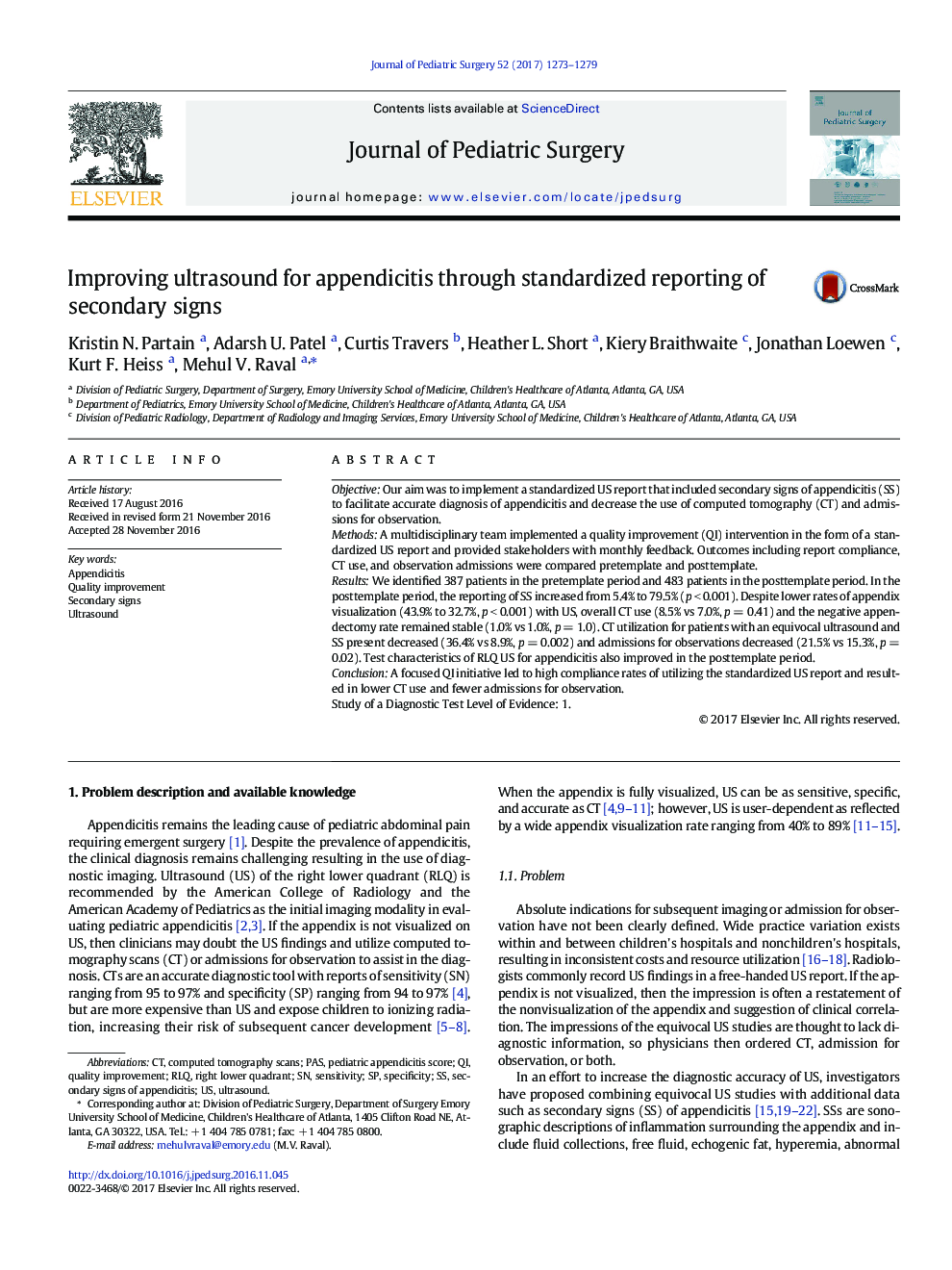| Article ID | Journal | Published Year | Pages | File Type |
|---|---|---|---|---|
| 5718098 | Journal of Pediatric Surgery | 2017 | 7 Pages |
ObjectiveOur aim was to implement a standardized US report that included secondary signs of appendicitis (SS) to facilitate accurate diagnosis of appendicitis and decrease the use of computed tomography (CT) and admissions for observation.MethodsA multidisciplinary team implemented a quality improvement (QI) intervention in the form of a standardized US report and provided stakeholders with monthly feedback. Outcomes including report compliance, CT use, and observation admissions were compared pretemplate and posttemplate.ResultsWe identified 387 patients in the pretemplate period and 483 patients in the posttemplate period. In the posttemplate period, the reporting of SS increased from 5.4% to 79.5% (p < 0.001). Despite lower rates of appendix visualization (43.9% to 32.7%, p < 0.001) with US, overall CT use (8.5% vs 7.0%, p = 0.41) and the negative appendectomy rate remained stable (1.0% vs 1.0%, p = 1.0). CT utilization for patients with an equivocal ultrasound and SS present decreased (36.4% vs 8.9%, p = 0.002) and admissions for observations decreased (21.5% vs 15.3%, p = 0.02). Test characteristics of RLQ US for appendicitis also improved in the posttemplate period.ConclusionA focused QI initiative led to high compliance rates of utilizing the standardized US report and resulted in lower CT use and fewer admissions for observation.Study of a Diagnostic Test Level of Evidence: 1.
